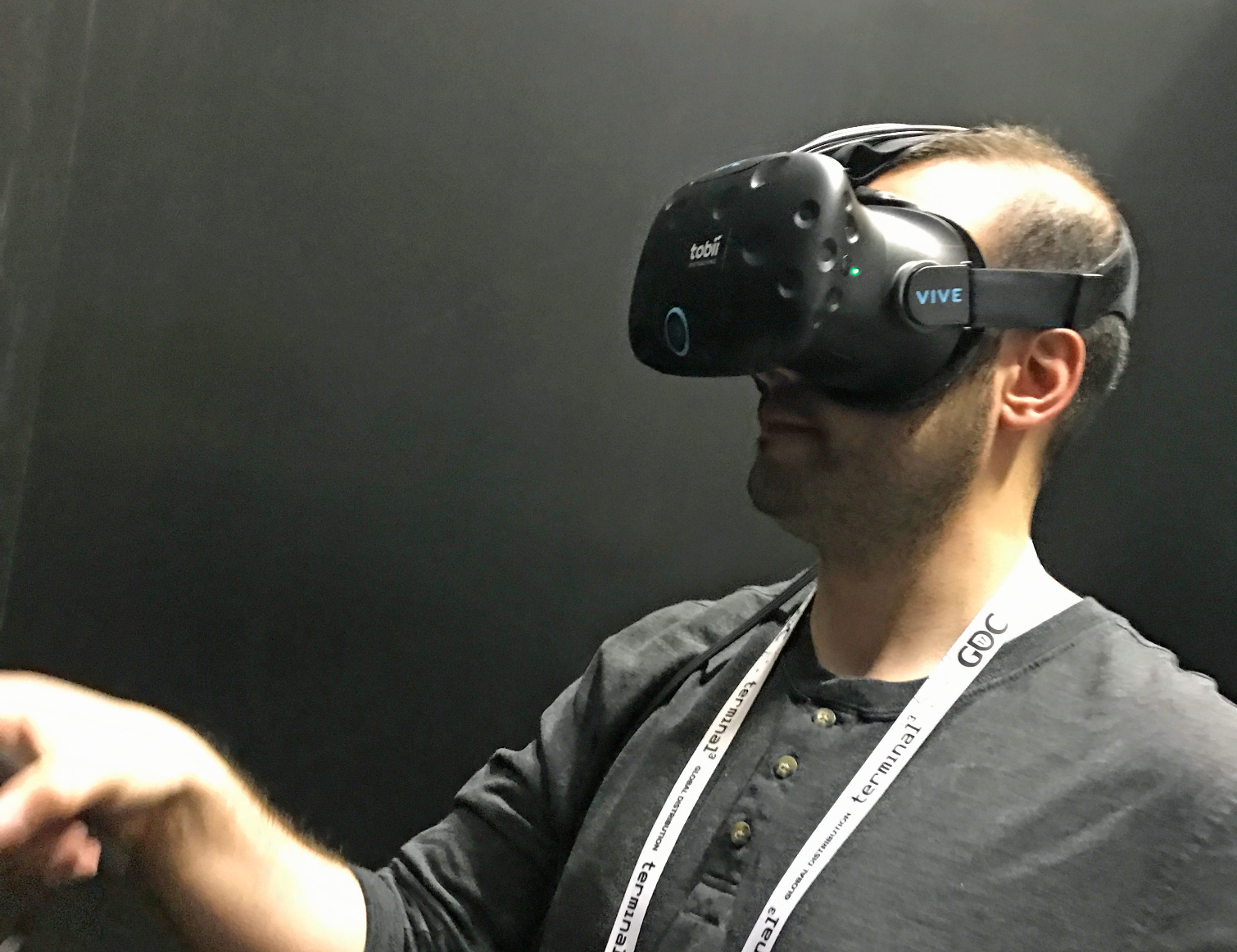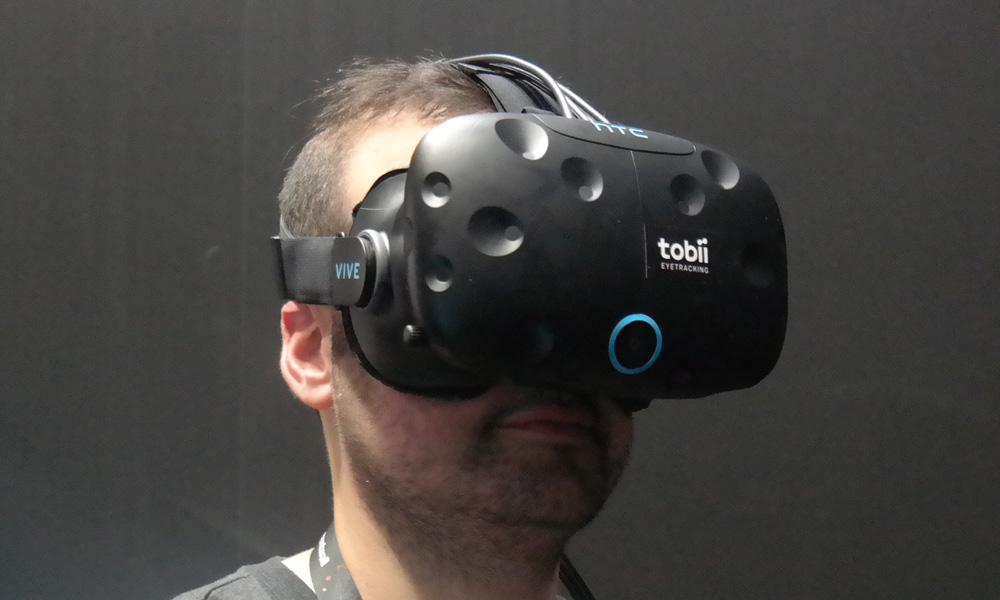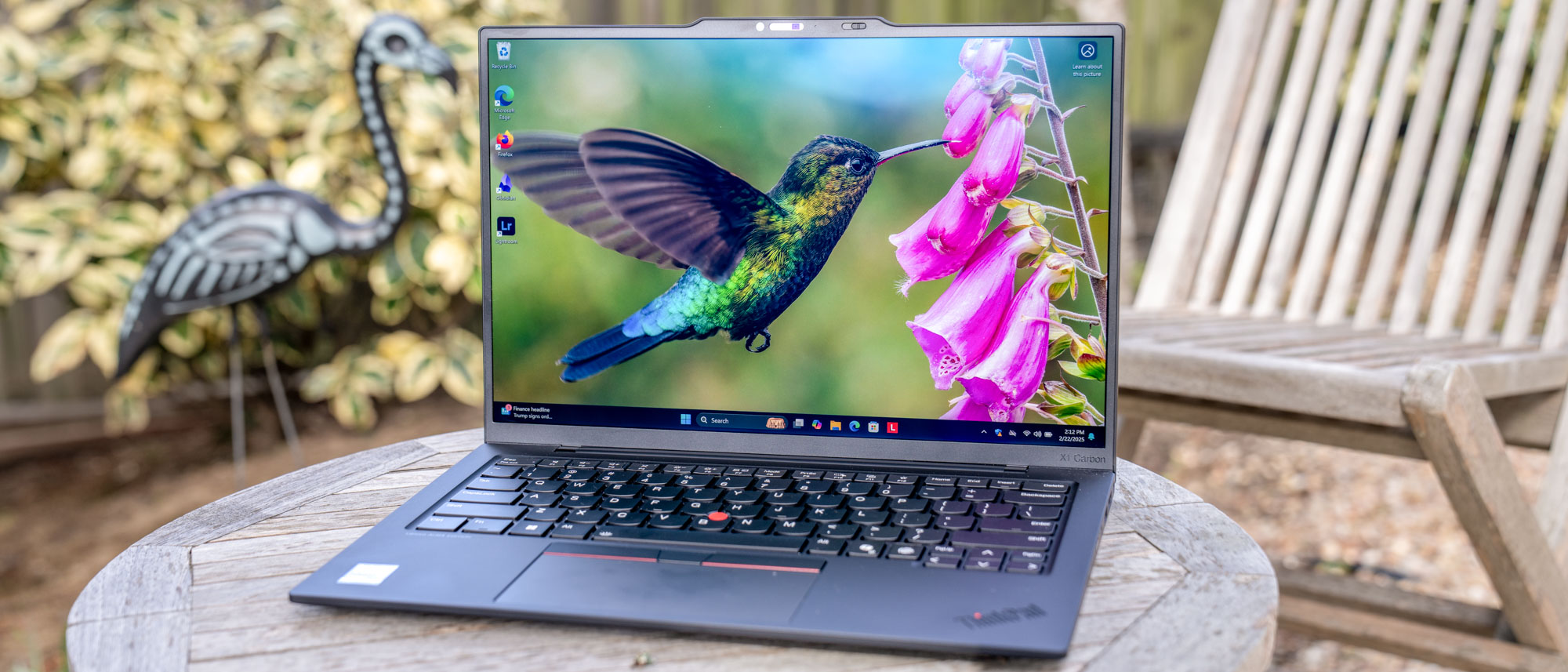Eye Tracking Is a Game Changer for VR, and I Just Tried It
Tobii's eye-tracking technology is coming to VR headsets, allowing for greater control and deeper social interaction within VR games and apps.

Virtual reality headsets such as the Oculus Rift and HTC Vive are incredibly immersive, but they typically require you to move your head and hands quite a bit in order to interact with the world around you. Tobii is working to change that.

The company is bringing its signature eye-tracking technology to VR, and after getting to test it for myself, my previous experiences with virtual reality suddenly seem incomplete.
Typically found on select webcams, monitors and laptops (like the MSI GT72S), Tobii’s eye-tracking tech essentially allows you to examine the in-game worlds around you by simply moving your real eyes. But in VR, this technology becomes an even more invaluable tool that can make VR experiences more intuitive, more social, and a heck of a lot more fun.
When I blinked or winked, so did my character. Where my pupils went, so did theirs. It was as incredibly cool as it was creepy.
The beginning of my demo had me stand in front of a virtual mirror that showed my in-game avatar, which mimicked my eye movements with an almost unsettling degree of accuracy. When I blinked or winked, so did my character. Where my pupils went, so did theirs. It was as incredibly cool as it was creepy.
MORE: Best VR-Ready Desktops and Laptops
I then tested the tech out within a few basic apps, one of which tasked me with throwing stones to knock down a series of bottles. But instead of having to worry about throwing the rock with the right amount of force and in the perfect direction, I simply had to look at the bottle I wanted to smash to lock on to it. Even if my head was facing one way and my eyes another, the rock always traveled to where I was looking.
I was even more impressed during the next portion of my demo, which let me interact with a whole bunch of objects on a virtual patio. With tons of objects laid before me, my eyes suddenly became a mouse cursor that let me scroll through them by simply looking around. I was able to alternate between bouncing around a beach ball, perusing a virtual storefront and getting money out of a robot ATM, all while barely moving my head.
I can already imagine using my eyes to find new loot and effortlessly sift through my inventory in action and role-playing games, or solving VR puzzles by simply looking around.
While these tech demos were simple, they hinted at a ton of potential ways that Tobii’s tech can improve VR games. I can already imagine using my eyes to find new loot and effortlessly sift through my inventory in action and role-playing games, or solving VR puzzles by simply looking around.

Tobii also sees eye-tracking as a means to make VR more social. Thanks to eye-tracking, your fellow players in a multiplayer VR experience are one step closer to their human counterparts, as you’ll be able to see them blink, look and emote in a way that regular VR headsets simply don’t allow for.
Tobii head of marketing Patrick von Bergen says that eye-tracking could change VR the way that touch capabilities changed mobile phones, as the things we do in virtual reality will start to feel more effortless and natural. After spending some time with Tobii’s tech in VR, I can’t say I disagree.
The company says that Tobii-enabled VR headsets could arrive as soon as late 2017. Of course, great VR hardware doesn’t mean much without great VR content, so I’m eager to see what developers come up with using Tobii’s extra-immersive tech in the coming months.
Sign up to get the BEST of Tom's Guide direct to your inbox.
Get instant access to breaking news, the hottest reviews, great deals and helpful tips.
Mike Andronico is Senior Writer at CNNUnderscored. He was formerly Managing Editor at Tom's Guide, where he wrote extensively on gaming, as well as running the show on the news front. When not at work, you can usually catch him playing Street Fighter, devouring Twitch streams and trying to convince people that Hawkeye is the best Avenger.

